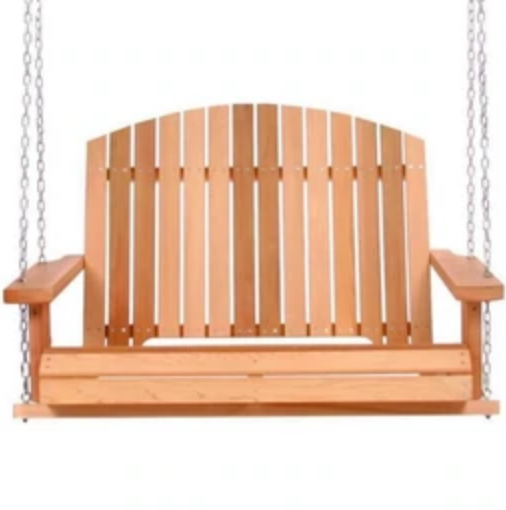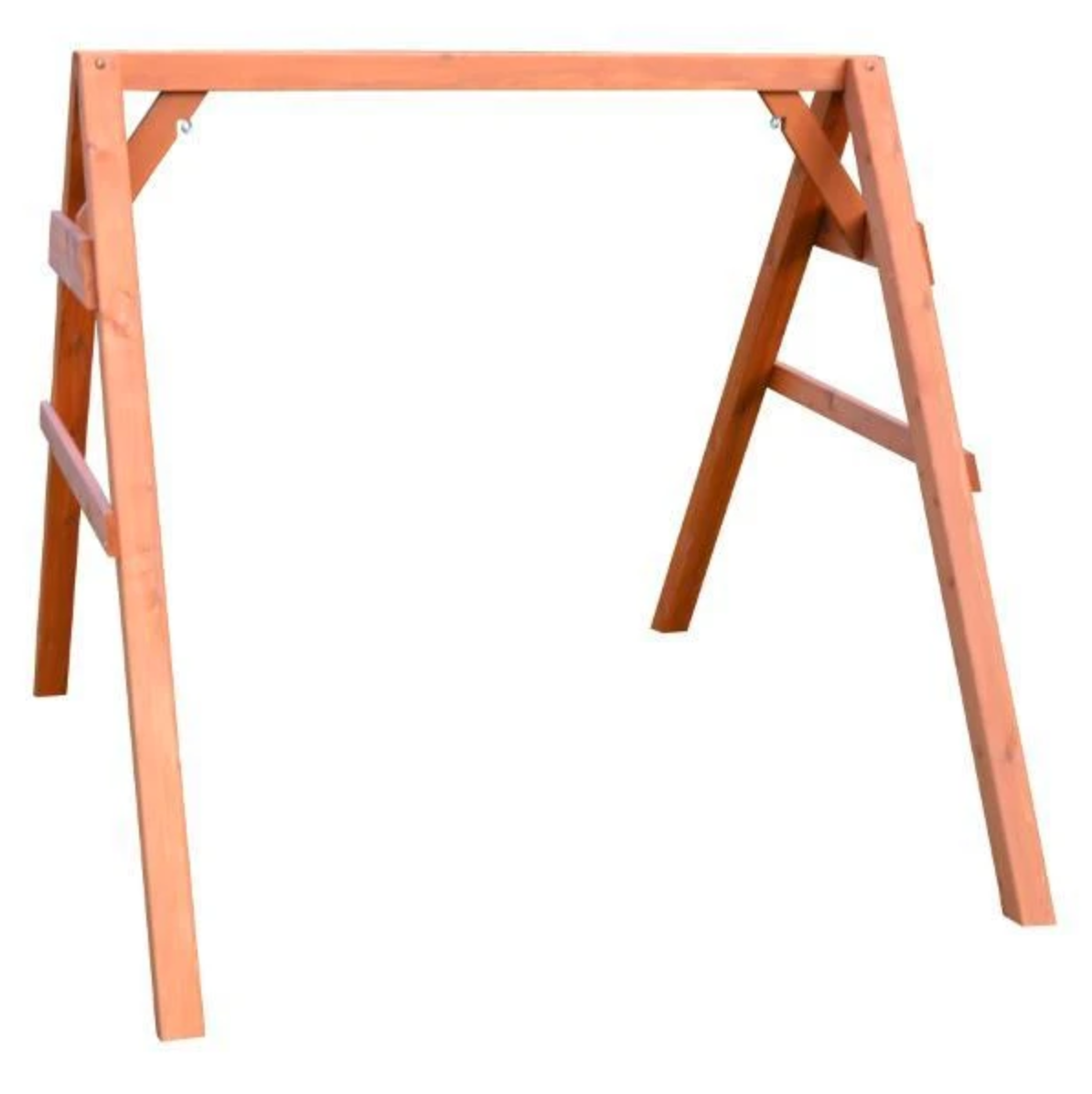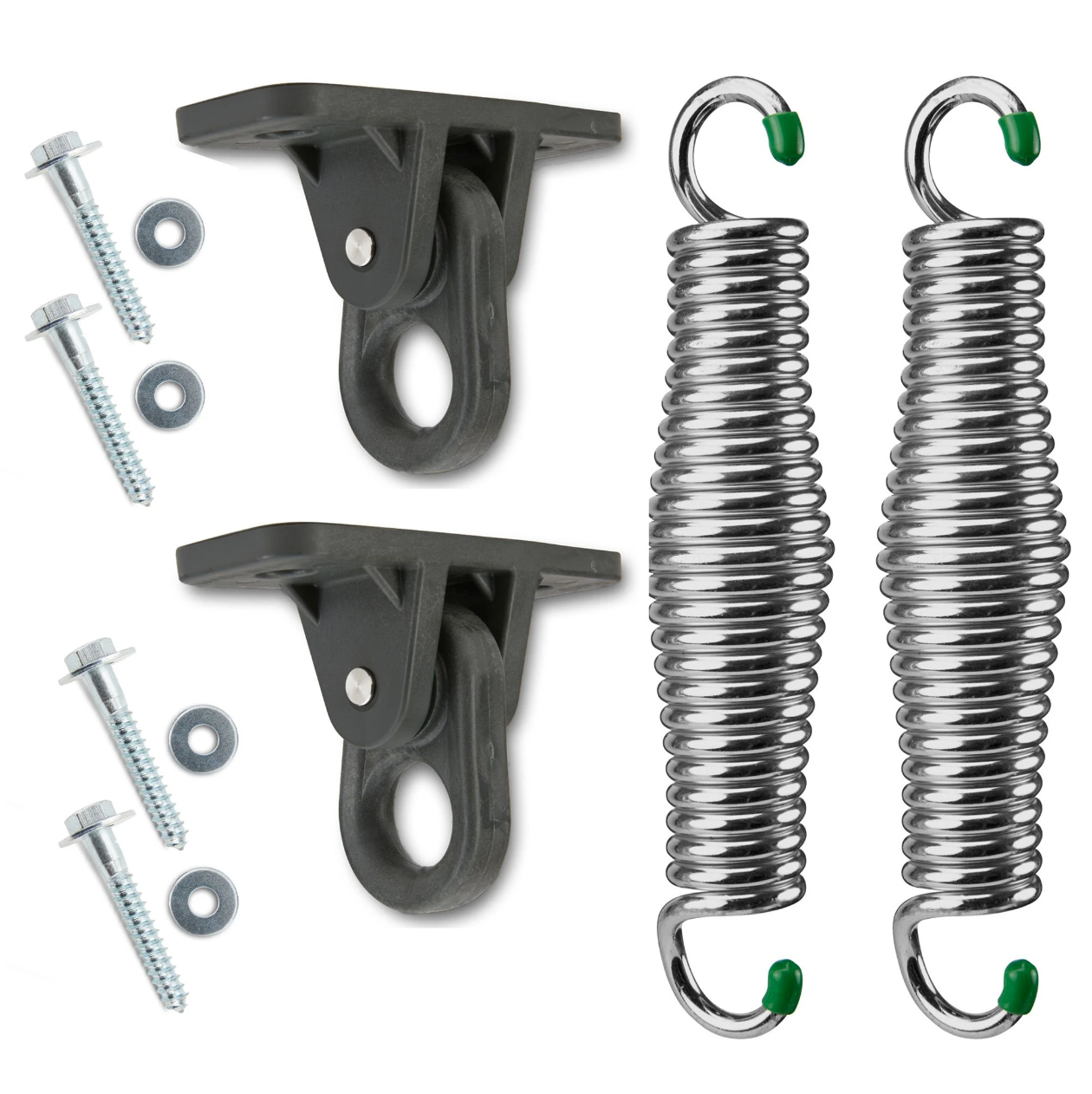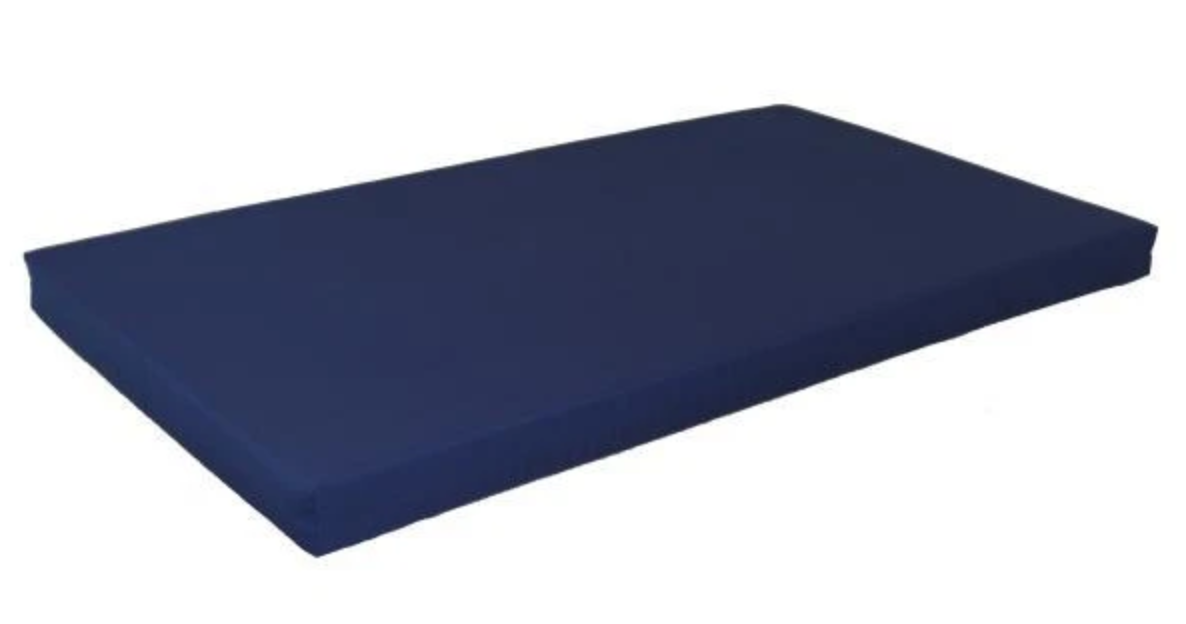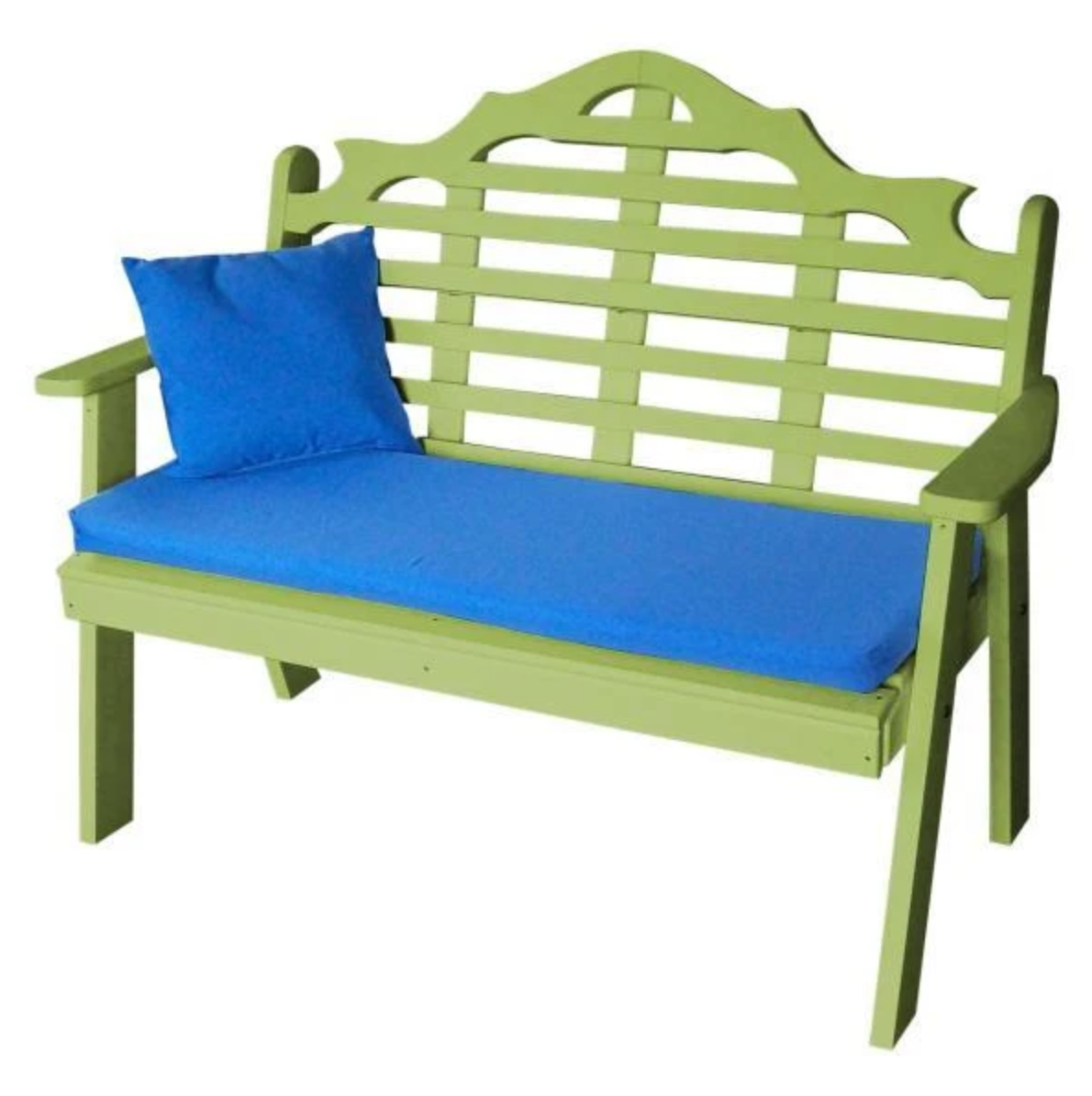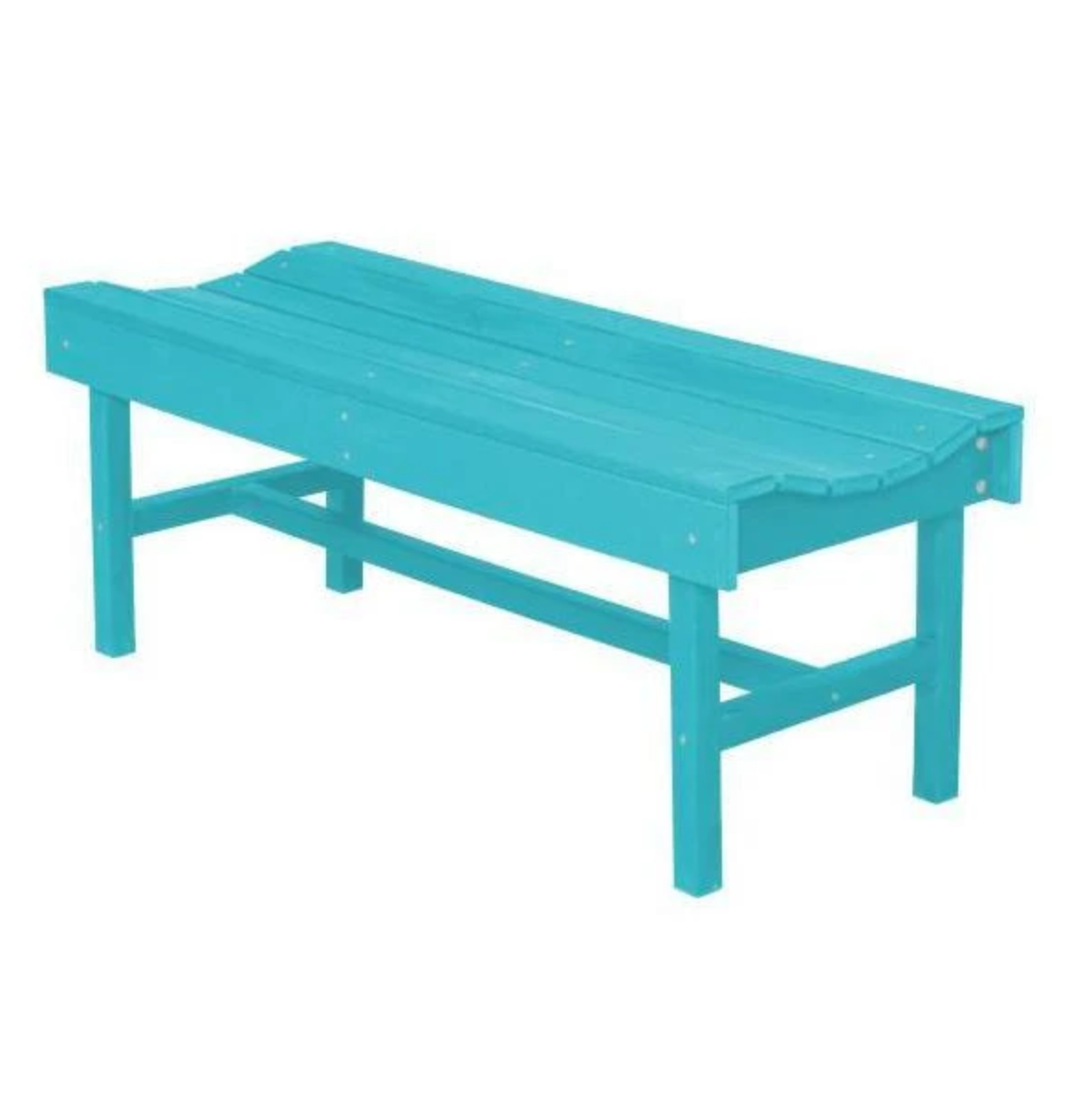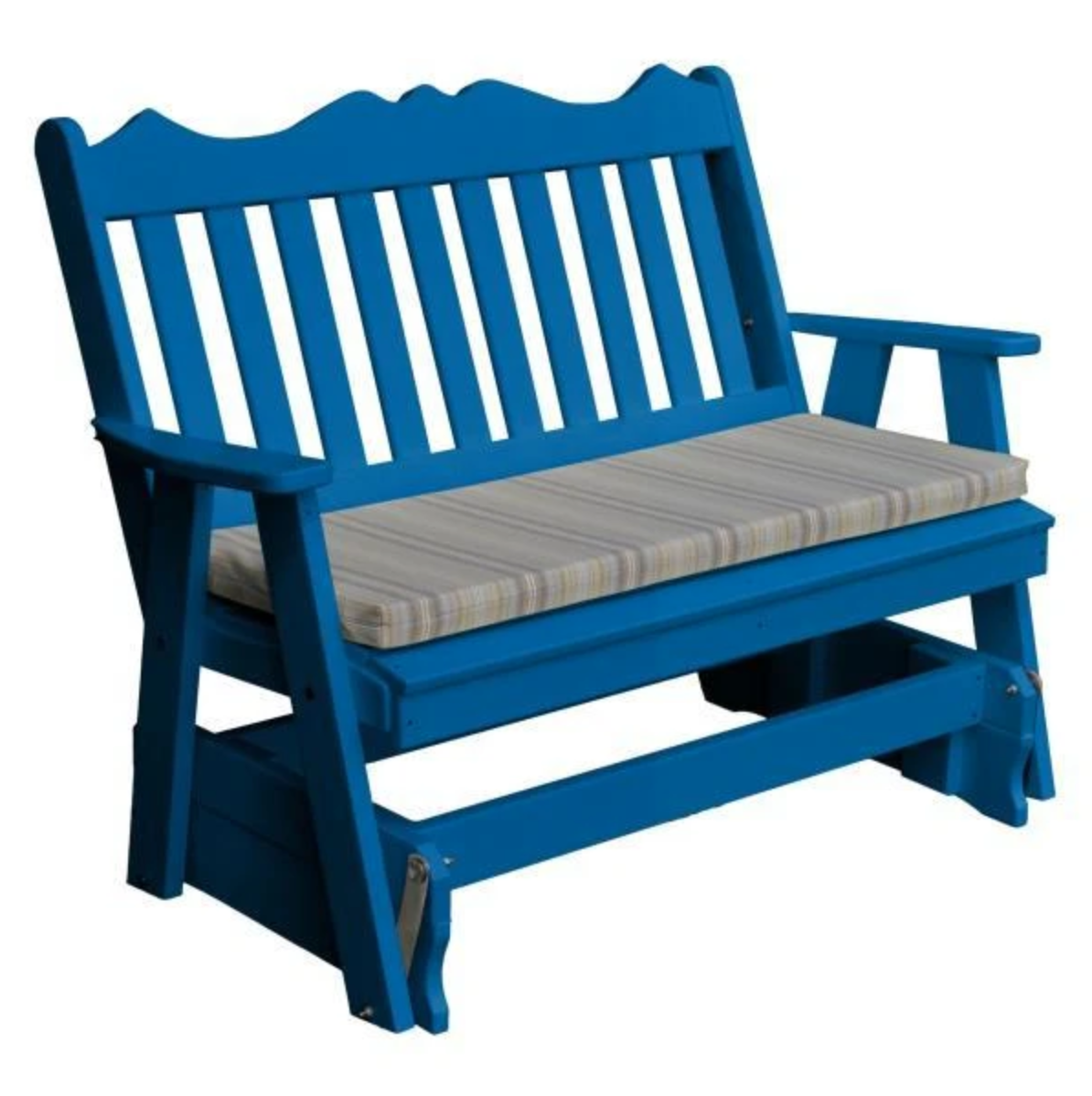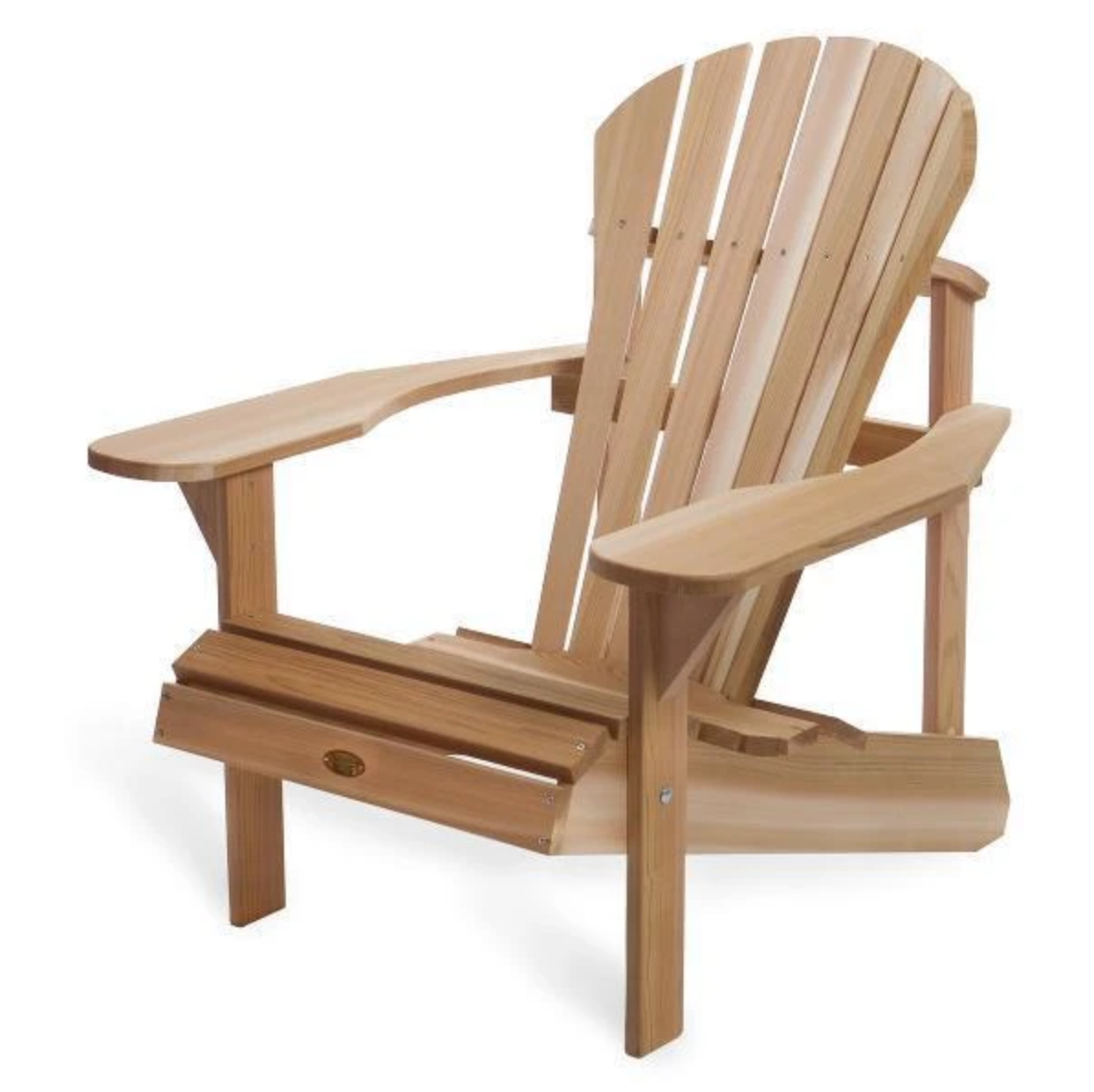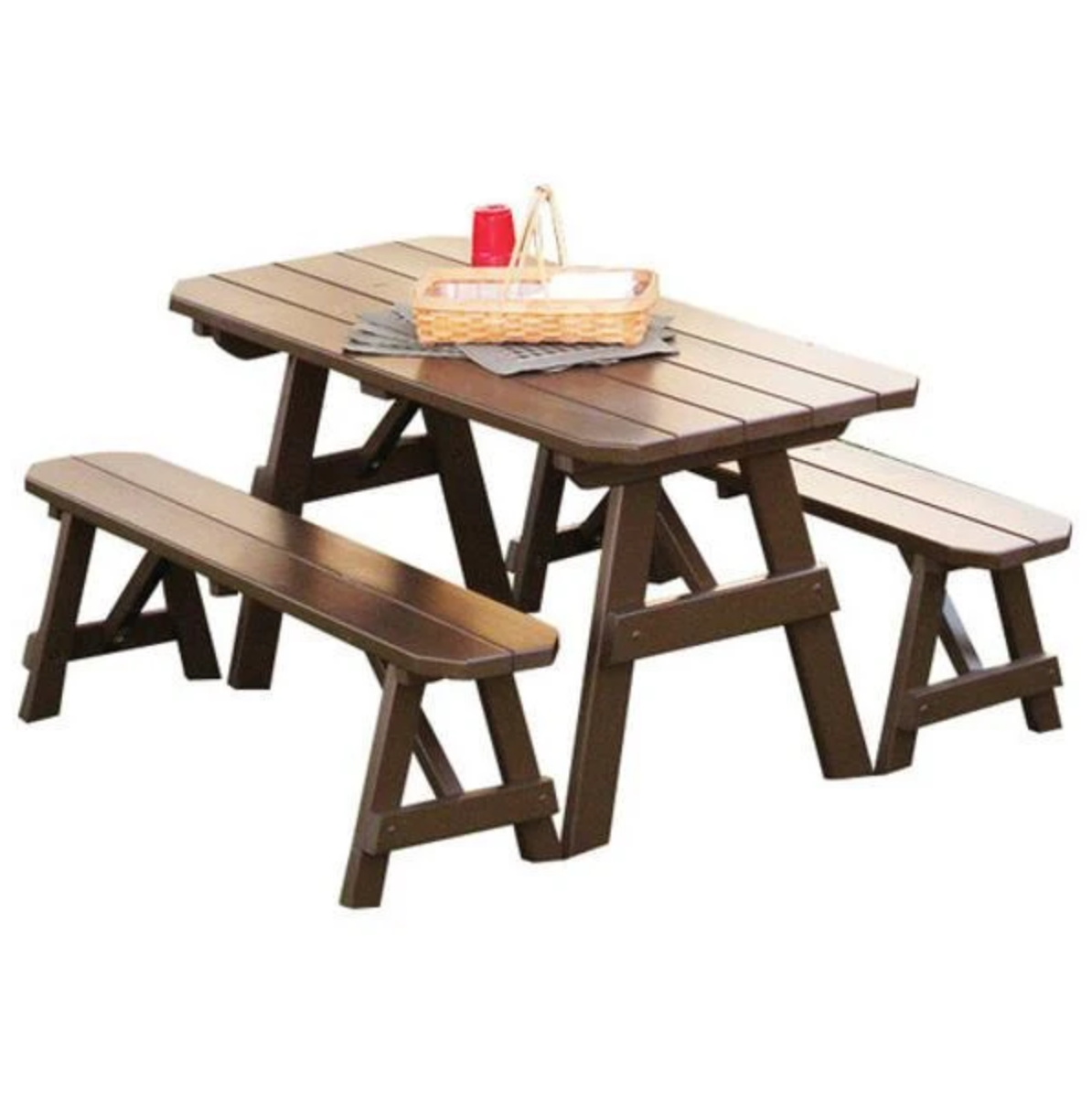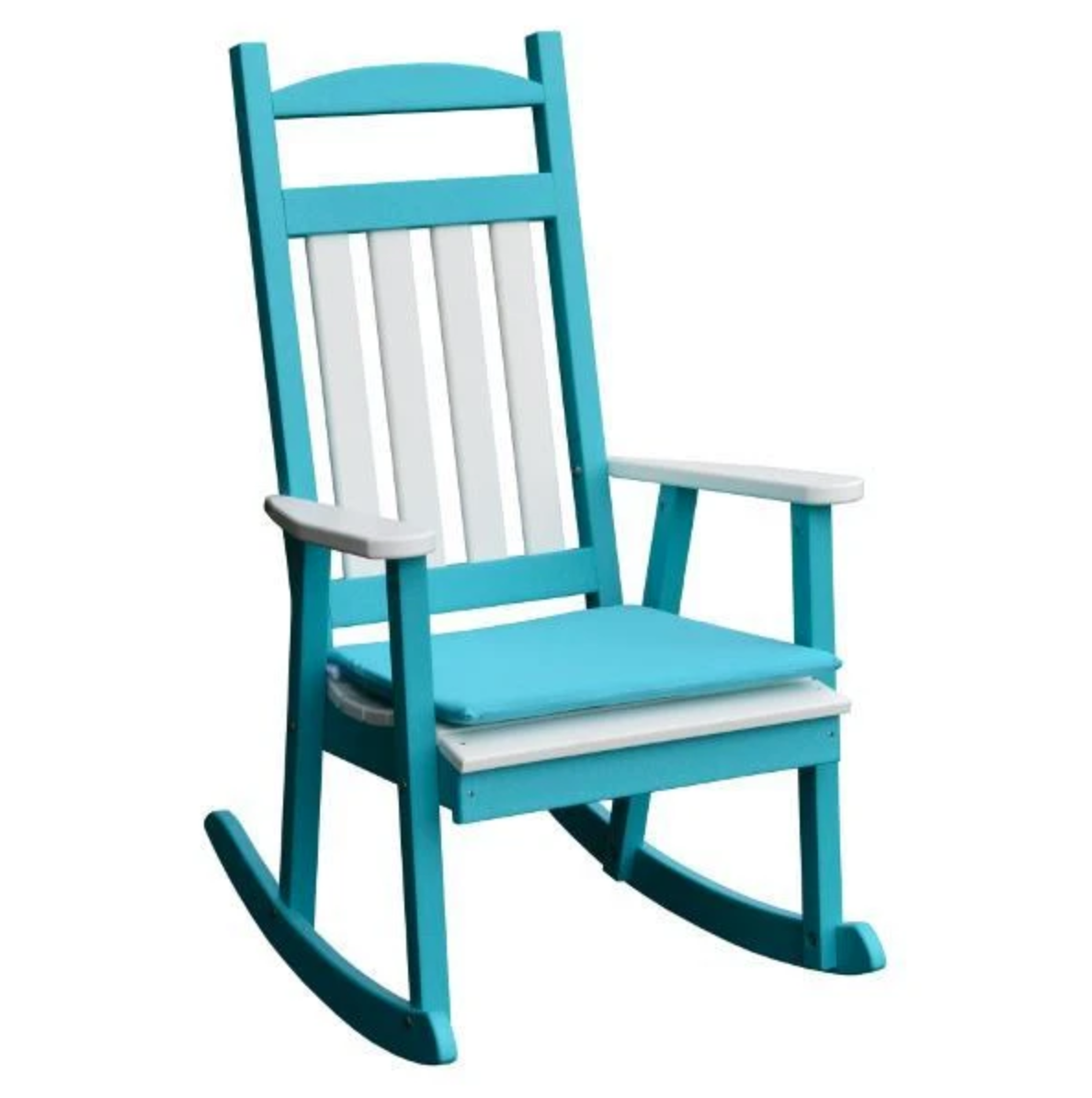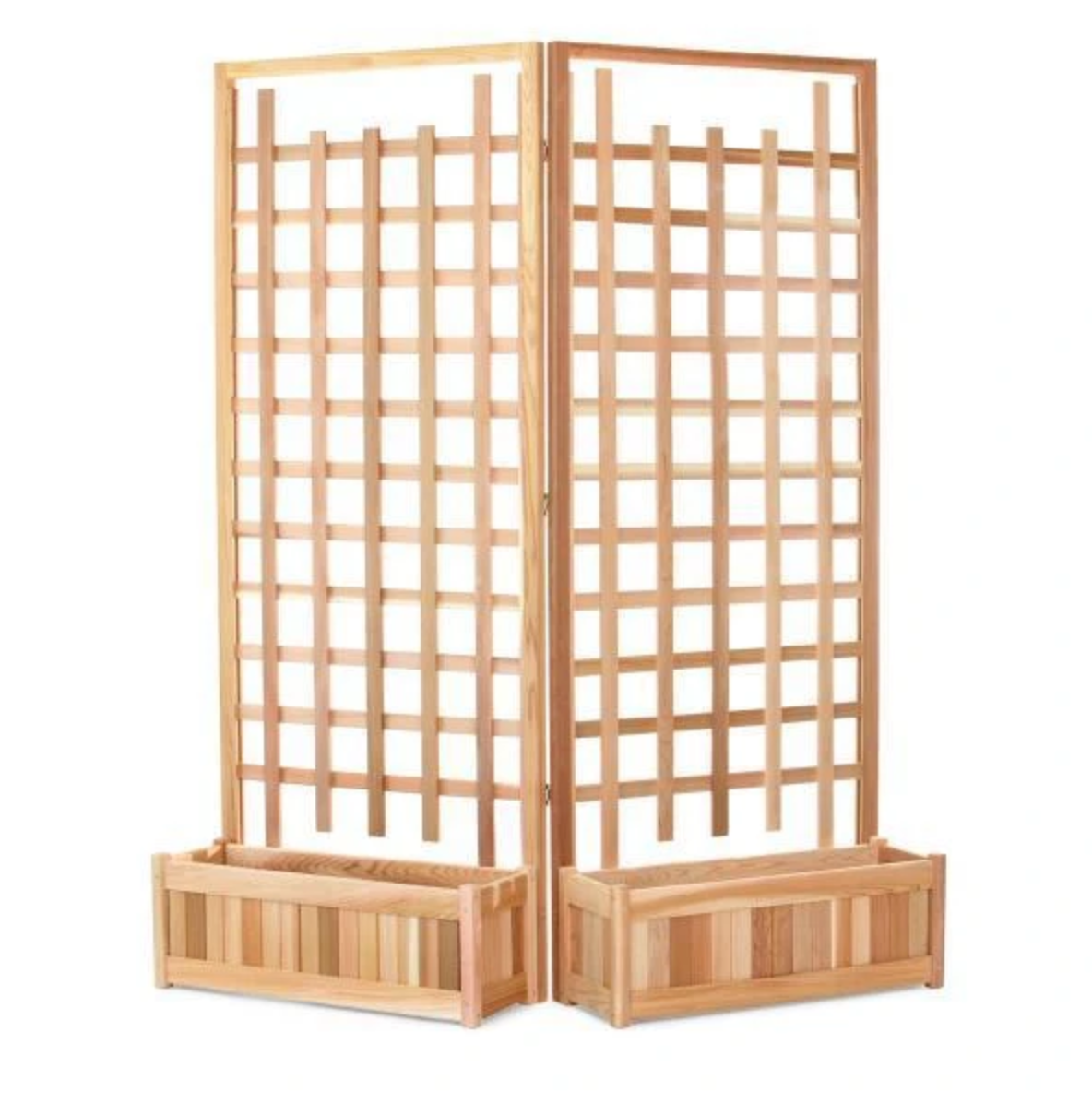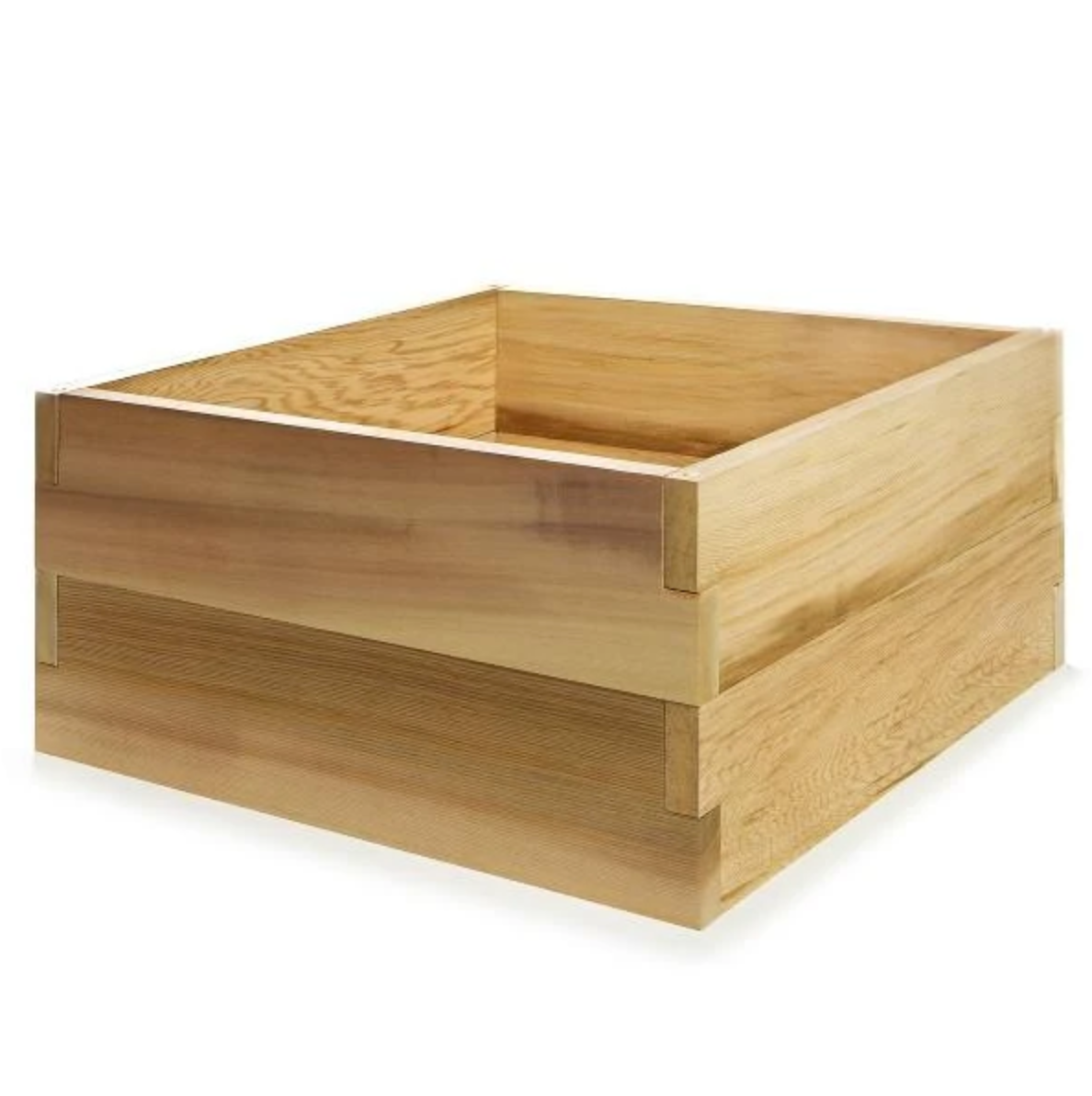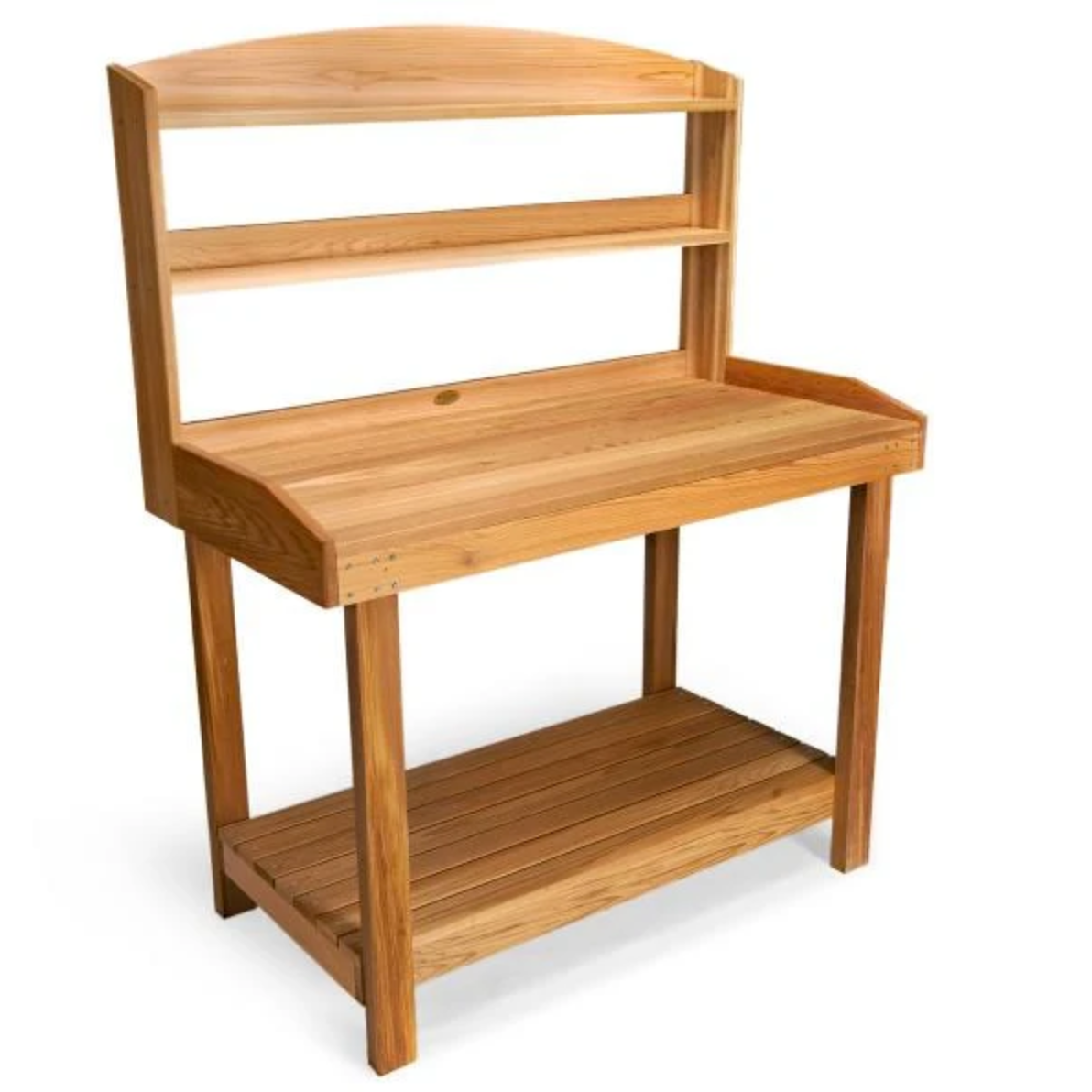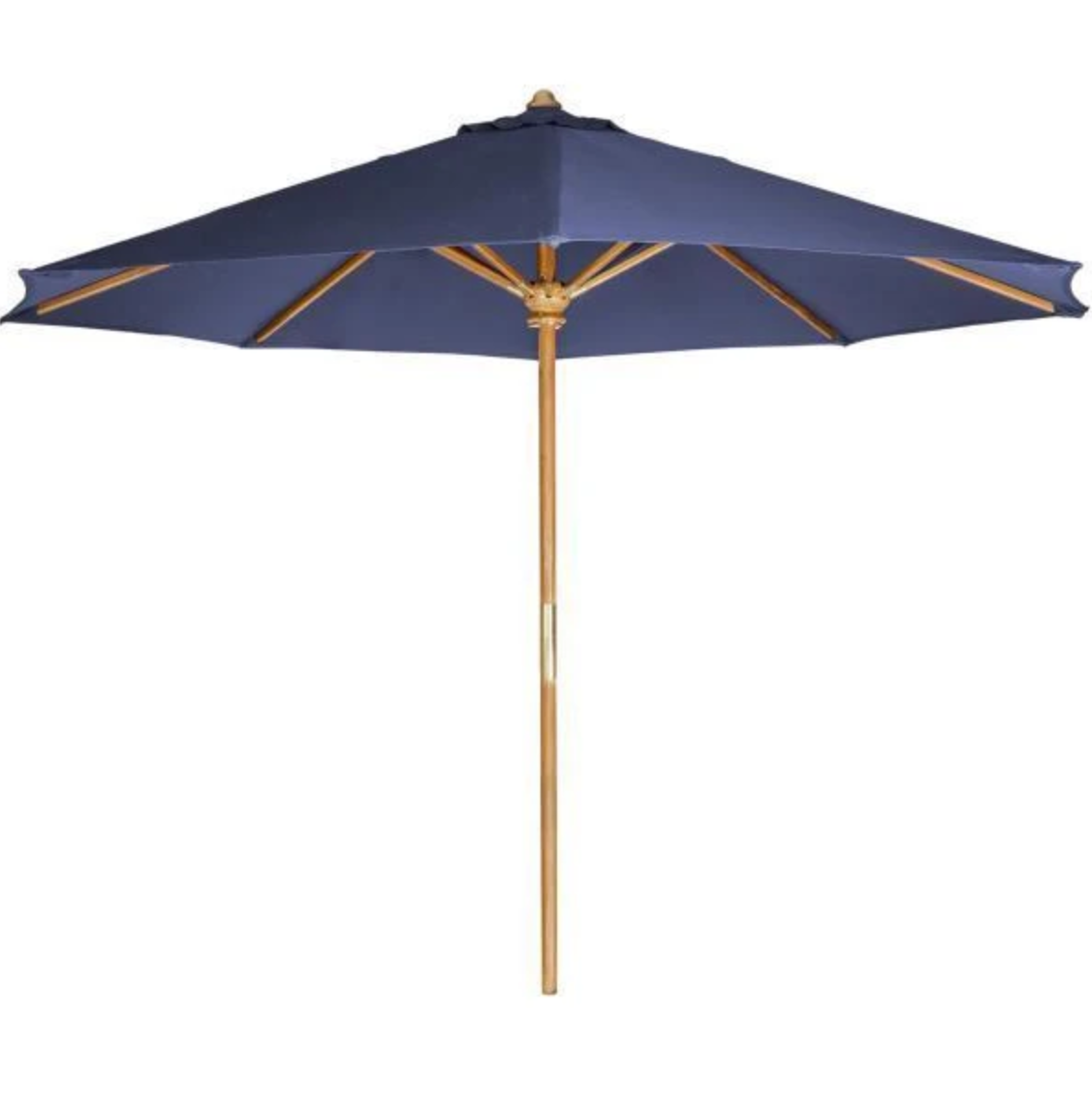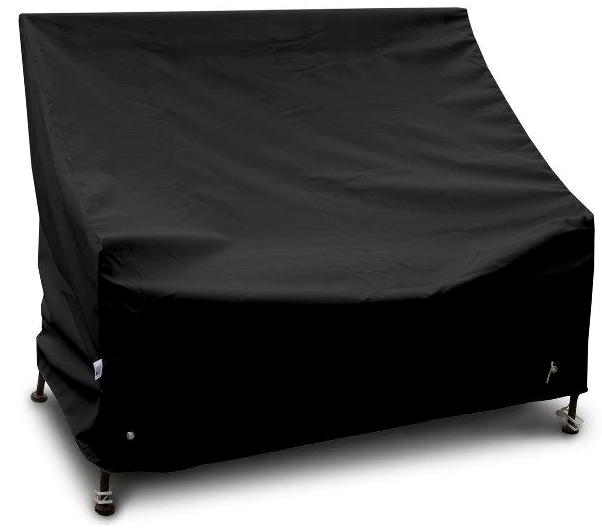Your Cart is Empty
FREE SHIPPING ON EVERY ORDER
Menu

FREE SHIPPING ON EVERY ORDER
Swings
Benches
Tables & Chairs
Home & Garden
How to Hang a Porch Swing Properly and Safely

There’s nothing better than a front porch swing. Stepping outside and swinging on a porch swing chair is one of the finer things in life. That's why it's so important to hang and secure your porch swing correctly for your safety. That’s why we’re here today, to teach you how to hang a porch swing properly using either a chain or a rope to swing safely every time.
Wondering how to hang a porch swing or swing bed? It's not as complicated as you might think. All you'll need is a few common household tools, a stable beam to hang your swing from, and a helping hand. We've put together a guide that breaks it down step by step for you:
What you'll need
- Stud Finder
- Safety Glasses
- Pen
- A drill and the appropriate drill bit (your drill bit should be a bit smaller than the screw)
- Swing Hangers and their accompanying screws.
- Pipe-wrench pliers/regular pliers for lag eye screws or a socket ratchet or nut driver if you have hex lag screws
- 4-6 ft Ladder
- Find your perfect porch swing
Locate the Ceiling Joists
Your very first step to hanging a porch swing is locating the ceiling joists. The ceiling joists will serve as your anchor points for the chain or rope of the swing. They are what will keep your porch swing safely attached to the ceiling of your porch.
Use a stud finder to locate the ceiling joists in the ceiling of your porch. Only anchor your porch swing to the ceiling joists. Never attach a porch swing to drywall or plywood without ceiling joist reinforcements.

Find the Right Beam or Joists
For starters, you’ll need to find a strong support beam or joists that will accommodate your swing length and still allow for plenty of room behind (at least 4ft). The beams and joists of a home serve as the foundational frame for the roof. They are generally the only parts of a house that are strong enough to support the weight of a porch swing or swing bed.
Anything that compromises structural integrity such as creaky or deteriorated wood should cause you to reconsider your choice. If you are unsure about your particular spot, consult a professional architect, or contractor for advice.
We will be installing each swing hanger approximately 1-2 inches outside of the actual swing length to disperse the weight evenly. If your beams and joists are hidden in the ceiling, use a stud finder to locate them and make sure the joists or beams are at least 2’ x 6’ or larger, and can support the weight capacity of your swing.
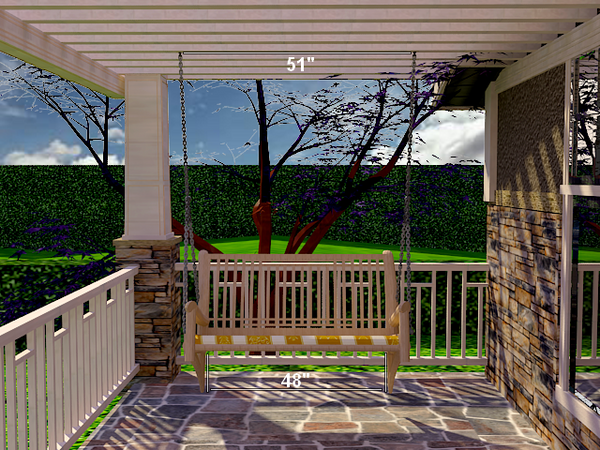
How to Hang a Porch Swing with a Chain
Your porch swing may come with a chain installation kit, or you may need to purchase a chain kit separately.
To properly hang a porch swing with a chain, you will need the following items:
- Stainless steel or galvanized steel chains
- Swing hooks
- Eye screws or eye bolts
Take some quick measurements to have on hand, too. If you don’t know how wide your swing is, you need to measure it to know how far apart your anchors need to be in the ceiling.
Locate the swing hooks on the swing. The swing hooks are what the chain will attach to from the ceiling.
Measure how far apart each swing hook is on the swing, and then add 2 to 4 inches to that measurement to give you the proper distance apart that your anchors should be.
Step One: Locate the Porch Ceiling Joists
The ceiling joists are your anchor points for your swing. Use a stud finder to locate the ceiling joists in the ceiling of your porch. Use a pencil or a pen to mark the ceiling joists so that you know where to attach your eye screws or eye bolts.
Step Two: Mark the Anchor Points
Once you have located the ceiling joists, you need to know where to install the screw eyes or eye bolts. Make sure you measure the distance between the ceiling joists to match the width of your swing so that the chains are spaced evenly apart and will attach easily to the swing. Mark the location in the ceiling with a pen or pencil to show you where you will need to drill.
Once you have decided where you want to hang your swing, put your safety glasses on and use a pen to mark the spot the first swing hanger will go (if your swing hanger has more than one hole, mark all of them before drilling). Next, measure the length of your swing plus 1-2 inches and mark the second swing hanger spot with a pen.
This is where the second swing hanger will go. Remember, there should be plenty of room behind the swing hangers/beam. Though you could get away with 3 ft, we recommend at least 4 ft behind your swing so it can sway back and forth with ease.
Step Three: Install Screw Eyes or Eye Bolts
The next step is to drill pilot holes into your beam/joists so we can screw in our swing hangers with ease. Pilot holes will help guide your screws into the wood, alleviating pressure and minimizing the chance of splitting your beam/joists.
Choose a drill bit with a diameter that is about the size of your screw shank. The “shank” on a screw refers to the upper portion of the screw that does not have threads. After selecting the right bit, use a drill gun to drill holes into the swing hanger spots you marked. Carefully align your swing hangers with the pre-drilled holes and screw them in.
If you are using lag eye screws to secure your swing hangers. you can use pipe-wrench pliers, or a hook drill bit to tighten the screws. Alternatively, if you are using hex lag screws to secure your swing hangers, use a socket ratchet or nut driver to tighten them.
The screw eyes or eye bolts are drilled into the ceiling joists in your ceiling to keep your swing attached to the ceiling. Drill the hanging hardware into the ceiling joists, ensuring they fit tightly in the holes.
Step Four: Attach the Swing Chains
The majority of swings are hung in an upside-down “Y” configuration. The longer chain runs through the armrest of the swing and connects to the side of the swing seat. The shorter chain runs from the lateral swing back and connects to the longer chain to set the swing upright.
Set the swing onto the ground and attach the steel chains to your swing. Your chain should be made of galvanized steel or stainless steel to prevent rusting or corroding.
For an 8-foot or 9-foot ceiling, you will need two 8-foot chains. For a 12-foot ceiling, you will need two 11-foot chains.
The long chain will run through the armrest of the swing and connect to the ceiling. The shorter swing chain runs from the back of the swing to the longer chain to distribute the weight of the swing evenly.
You want to install your porch swing so that it is 17”-19” inches off the ground for optimal comfort. Using a ladder, stand behind the swing and have someone lift the ladder to you. Attach each chain to the eye bolt or screw eye, lifting the swing off the ground between 17 and 19 inches high.

Set your swing down on the ground directly below your swing hangers. Place a ladder directly behind the swing and have someone lift the swing up as you climb a ladder to link the top chains onto the swing hangers. Once you have attached the longer chain, tilt the swing back about an inch and adjust the shorter chain to your comfort. And Voilà! You’ve completed the installation of your new charming porch swing! Now sit back, relax, and swing away!
TIP: Make sure to periodically check your ceiling for any signs of cracking or warping. If you notice any damage, remove your swing and consult a professional contractor or structural architect. Make sure to replace severely rusted chains.
Step Five: Test the Swing
Sit down in your swing and test it out! You may need to make some adjustments to the tilt of the swing, which you can easily do by adjusting the height of the chains.
How to Hang a Porch Swing with a Rope
Hanging a porch swing with a rope will follow the same steps above with a few modifications.
To properly hang a porch swing with a rope, you will need the following items:
- ¾” or 1” rope measured double the length of your ceiling
- Screw eyes or eye bolts
Take measurements of the width of your swing so that you know how far apart you need to drill the anchors into the ceiling joists.
Follow steps one through three above. You need to locate the porch ceiling joists, mark the drill points, and then install the eye-bolts or screw eyes to the ceiling joists.
Step 1: Hang the Rope
Once the eye-bolts or screw eyes are properly attached to the ceiling joists, you will run the rope through the opening of the eye-bolts or the screw eyes so that the same amount of rope length is on each side.
Step 2: Attach the Rope to the Swing
Insert one end of the rope through the hole of the porch swing and tie a knot. Make sure the knot is tied tight and won’t come undone. The knot should be as close to the bottom of the porch swing as possible.
Repeat this on the other side of the swing, making sure that the swing is evenly off the ground between 17 and 19 inches high.
Step 3: Test the Swing
Test the swing to make sure it is securely in place and enjoy!
Conclusion
So, there you have it! That’s all you need to do for a proper and safe porch swing installation. Before you go, check out some of the porch swings on our website for you to add to your front porch! You can attach these porch swings with a rope or a chain. Some swing options come with cushions or pillows included with the patio swing, making it the ultimate spot on your front porch!
Legal Stuff: While this guide is intended to help our customers understand the process to hang a swing, every installation of a swing is unique to your home and we recommend you consult a professional contractor before any installation. We want you to safely enjoy your swing!
Also in News
US
United States
Dec 13, 2025 17:52
Product Tag :
Product Collection :
×
